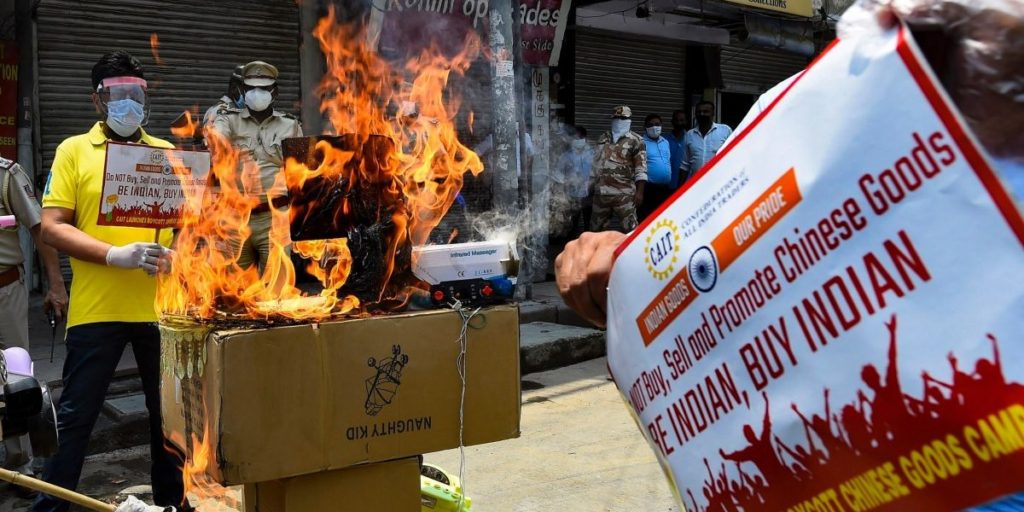Itty Abraham
I still remember the horror I felt when I first saw a large-scale map of India hanging on a wall in a US classroom. I was in my first semester of graduate school, the class was on comparative politics. The map in question showed the northwestern and northeastern extensions of what I had always known as the Indian state of Jammu and Kashmir to “belong” respectively to Pakistan and China.
After the class, my voice shaking, I went to the professor and explained that the map was incorrect and needed to be removed from the classroom so that it would not confuse the other students. He listened patiently to my increasingly frantic protestations and then asked, ‘Are you sure?’
I was stunned into silence. I ran to the library (these were pre-Google days). Every map I consulted showed the same result. The map of India I had grown up with was incorrect; the American wall chart was more faithful to conditions on the ground than I thought. A visual claim to ownership, I realised to my shock, did not equate to actual material possession.
I still remember vividly how viscerally I felt that revelation. My own body felt less complete than it once was. I had so identified with the body of the nation that when I found it to be less than I thought it was, I felt the pain of scission in my physical self. Later, when this feeling had subsided, I felt betrayed. How could I have been told and come to believe something that was not true? What else that I had taken to be a matter of unquestioned national fact was represented incorrectly?
The equation between the body of the nation and the citizen-self is a foundation of modern patriotism. It is produced by repetitive socialisation, by the constant re-presentation of the physical boundaries of the nation, from the visual to the auditory, from school textbooks to national anthems, reinforced by travel, language and everyday tokens of the state, including a uniform currency and law. With the news of a Chinese assault on Indian soldiers in a remote corner of the national territory, this equation has come into question. The bodies of slain soldiers tell us India’s territorial body is under attack and its borders must be defended. Of this, there appears to be little question. But is it the correct one?
Since the tragic loss of life, battalions of experts and pundits have taken to the digital spectrum and mass media to prognosticate and argue about the attack. What happened, what does it mean, who is responsible, what can India do? While the most pragmatic suggest that India has few practical options to reverse this shameful perfidy, others prefer a more fiery response, ranging from boycotts of Chinese goods to reprisal attacks. An eye for an eye.
It is a dangerous fallacy to see the the country as a scaled-up version of the individual body. Yet, displacing that equation is extremely hard, especially since so much everyday language works to join the two seamlessly – from an eye for an eye to the “body politic” or parliament as the national legislative body. Everyday language also includes powerful metaphors of embodied loss, most notably the still-festering Partition, as well as the insidious violation of physical boundaries: the virus of “infiltrators”. India is not alone in this regard. To take an obvious example, China imagines Taiwan through comparable linguistic metaphors and remains determined to “restore” that missing piece of the Han homeland.
The more national territory is seen as a body, the less possible it becomes to see any “loss” of land or at sea as anything but a crime against the state, deserving of war. The metaphor relies on our natural aversion to any truncation of our physical bodies: who would willingly give up an eye, a finger or a leg? But no matter how naturalised, the nation-state is not the sum of all our bodies.
It bears remembering that many countries – including India and China – have given up territory in the past, trading land for better relations with their neighbours, without any diminution of the nation-state. It is also important to note that there are different kinds of borders. Aksai Chin’s high altitude un-demarcated and contested boundary is very different from the open border between India and Nepal or the fence that separates (some of) Bangladesh and India. Most obviously there are no people living in Aksai Chin while those other borders are crossed daily by lakhs of people, animals, boats, and goods through legal, illicit and illegal means.
India’s extensive marine territories are likewise extremely porous: it is simply impossible for the Coast Guard to monitor (let alone prevent) all maritime passage through India’s territorial waters, to be sure who is passing through or what their intentions are. Borders are neither physical containers analogous to the skin of the individual body nor the inviolable indices of national strength we take them to be. The physical markers of the border – the fence, the customs post, the immigration checkpoint, the passport – are assumed to be material evidence of a national body. In fact, the reverse is true. The materiality of the border-crossing helps reinforce the collective fiction that there exists such a thing as a national body outside of our imagination.
If the national body is an imagined construct, that doesn’t make it any less real or potent. Rather the question becomes, what kind of imagination do we rely on to fill our collective body. Does it begin from the idea of ownership of territory, in the way that we own property or our bodies, or can it come from somewhere else?
Returning to the high Himalayas, I am not so naïve as to propose that India should unilaterally give up territory to resolve this crisis. China’s anxieties over its own lost territories, imperialist definition of what counts as national strength, misunderstandings of Delhi and racist perceptions of Indians will only embolden Beijing if India shows any signs of perceived weakness at the present moment. The best we can hope for in Aksai Chin is a negotiated settlement, ideally built around a deep de-militarised zone separating the two armies. The greatest difficulty in such a negotiation will be defining mutual victory notwithstanding the zero-sum logic of territorial ownership, a condition that will stretch the abilities of diplomats to the extreme.
As long as both India and China rely on metaphors of physical ownership to imagine their respective national territories, there can be no sustainable resolution of this conflict. Territorial grabs will continue, the body of the nation will suffer a thousand cuts, and victory will be measured in zero-sum terms. What is required for this conflict to end is a re-imagination of both countries’ core identity that does not begin from territorial possession. In the long run, India’s “victory” over China will only take place when the “idea of India” overpowers Xi Jinping’s “China Dream.” Only when India’s national strength is measured by the well-being of the weakest of its citizens and when the state delivers the reality of a better life for all its citizens, will India “defeat” China once and for all.
Put another way, India’s core weakness is not a poorly defended national border but a society riven by poverty, inequality, hierarchy, religious conflict, gender violence, and the near-impossibility of imagining an economically secure future for the majority of its citizens. Only an India that can acknowledge, address and overcome these foundational weaknesses will win the victory that matters, fought against the most worthy of opponents: itself.
[Itty Abraham is the author of How India Became Territorial: Foreign Policy, Diaspora, Geopolitics (Stanford University Press, 2014). He teaches at the National University of Singapore.]




